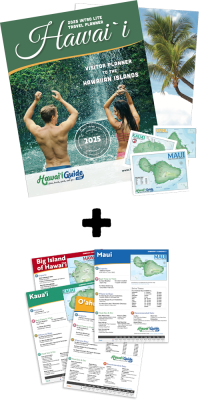No matter where in the world you’re visiting from, nobody expects a trip to Hawaii to be cheap. With very rare exceptions, that is generally a reasonable assumption. There are good reasons why it’s expensive to fly to, and spend time on, a remote island chain in the middle of the world’s largest ocean. Sadly, these costs can often be prohibitive for would-be visitors.
However, that doesn’t mean there aren’t viable ways to reduce the cost, or even ways to do so quite dramatically.
A common misapprehension about Hawaiian travel (if not travel altogether) is that the expenses to focus on are the obvious, big, singular ones: plane tickets and hotel bookings, and perhaps rental vehicles as well. This is understandable, and these are of course genuinely large and essential pieces of the overall budget. The issue is their monolithic fundamentality; they’re the first things you think of when you think of planning a trip, and they’re the first and perhaps only place where you try to find the best deals in order to make your journey feasible.
This is in contrast to other, sneakier travel expenses - like food.
Food is actually one of the largest expenses involved in a visit to the Hawaiian Islands. It’s been estimated that the average tourist spends about $61 a day on food - and that’s per person. Keep in mind this can vary a lot, too. It can be alarmingly easy to far exceed this already impressive average.
Yet that wide variation goes both ways. It is also much easier than you might think to slide well below that $61 median - and you may actually have a better, more enriching and interesting trip because of it.
Here are 3 simple tricks to help you save a surpris

1. Drink Tap Water
Stigma about the local tap water in tropical destinations is as old as - well, the advent of running water, you might suppose. Who knows what conglomeration of stretched fact and hysterical fiction this is all based on, but in Hawaii at least, it is totally inaccurate.
Tap water in Hawaii is completely safe to drink. In fact, some claim it is among the best tap water in the world. One such person is the fittingly-named Denby Fawcett, a long-time resident and columnist for Honolulu Civil Beat, who has written that Hawaiian tap water is arguably safer to drink than in numerous mainland cities - even those which are often praised for their tap water. This is because it comes from underground and isn’t exposed to airborne contaminants like many of the lakes and rivers where mainland Americans get their tap water from.
Tap water is free. Bottled water, and the rate at which you’re bound to consume it in a hot, sunny place renowned for hiking, is decidedly not.
FREE 2025 DOWNLOADS
Hawaii Intro Visitor Guide
+ Our Summary Guidesheets!
Includes the top must-see & do attractions, best times to visit, a monthly weather & visitor summary, and our tips on how to save when booking your car rental, tours, and activities. Plus, grab our free Hawaii Summary Guidesheets.

2. Buy From The Locals
Another unfairly stigmatized approach is to buy food from local vendors, farmers markets, and roadside stands. This is in fact often the freshest, best food you can find anywhere on the islands; and it is quite frequently the cheapest; and your money usually goes directly into the pockets of local families/growers.
That’s not to mention the fact that it can make for a much more interesting and memorable experience than wandering through a crowded grocery store that is indistinguishable from back home.
It’s a win across the board for everyone.
While you’re at it, try venturing inland and eating at local restaurants, too. Many of the same benefits apply here as well. Not only is it usually more affordable, it also supports local family-owned businesses and gives you and your companions a novel cultural experience. Provided you’re polite and respectful, they’ll be happy to have you.

3. Cook
Tourists tend to be averse to this strategy. After all, you’re on vacation - why cook in the kitchen like normal?
Saving colossal wads of money isn’t the only reason. It doesn’t have to be “normal” at all. Being in Hawaii is an opportunity to try cooking something new, inspired by the culture’s rich and unique cuisine, and by the availability of numerous ingredients that may be tough or even impossible to find elsewhere.
Spending the day drinking fresh water off the island, connecting with locals and discovering their food/culture, and becoming a more experienced chef - it all sounds like good fun even without the surprise bathtub of cash you get to keep after the trip is over.



